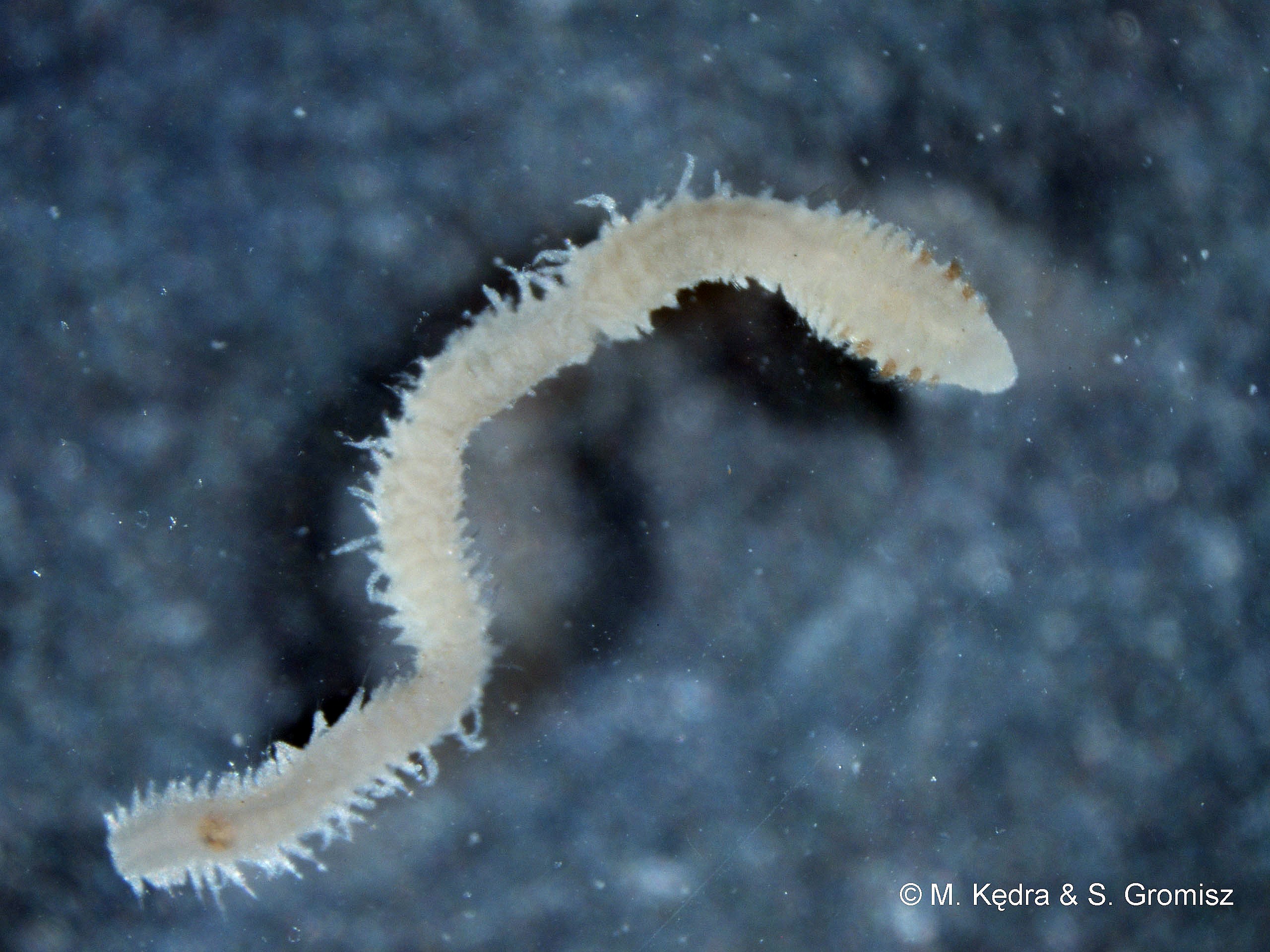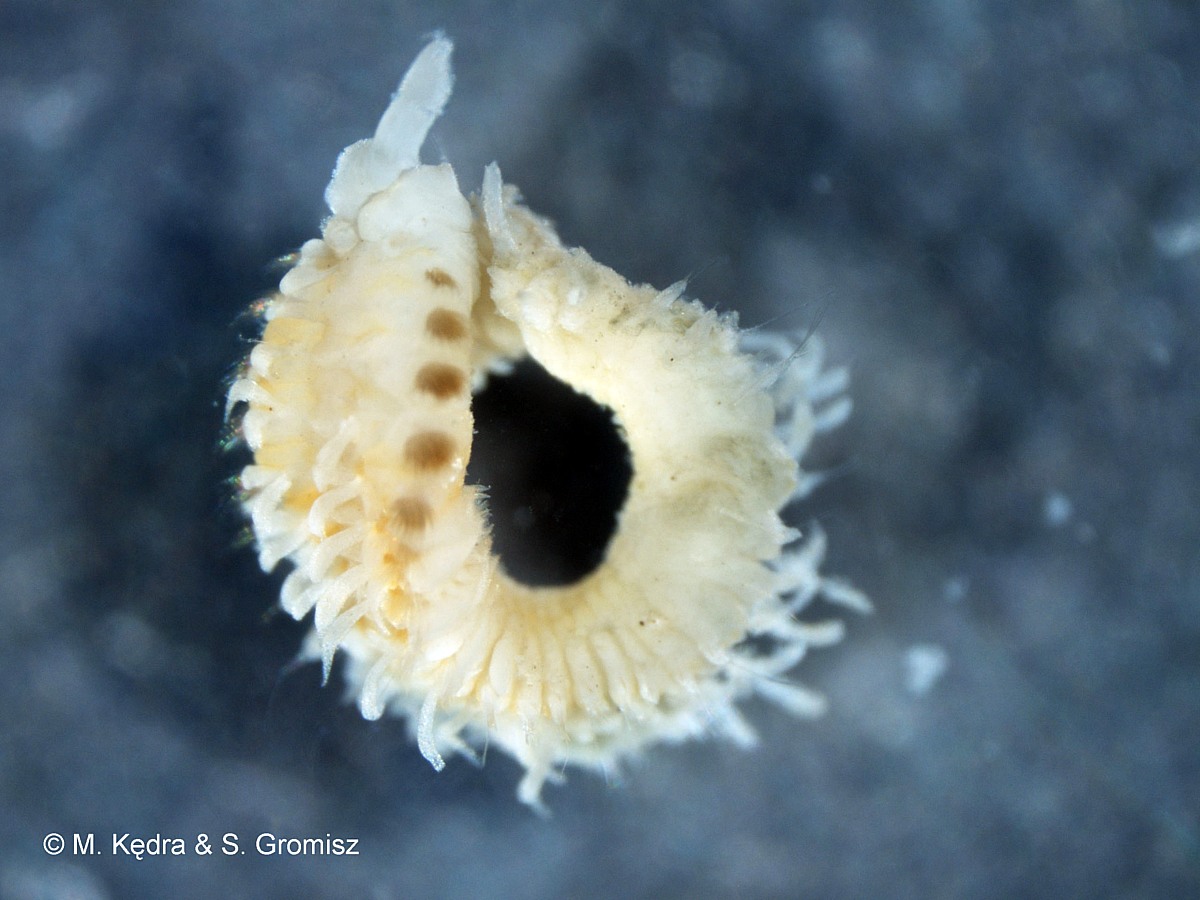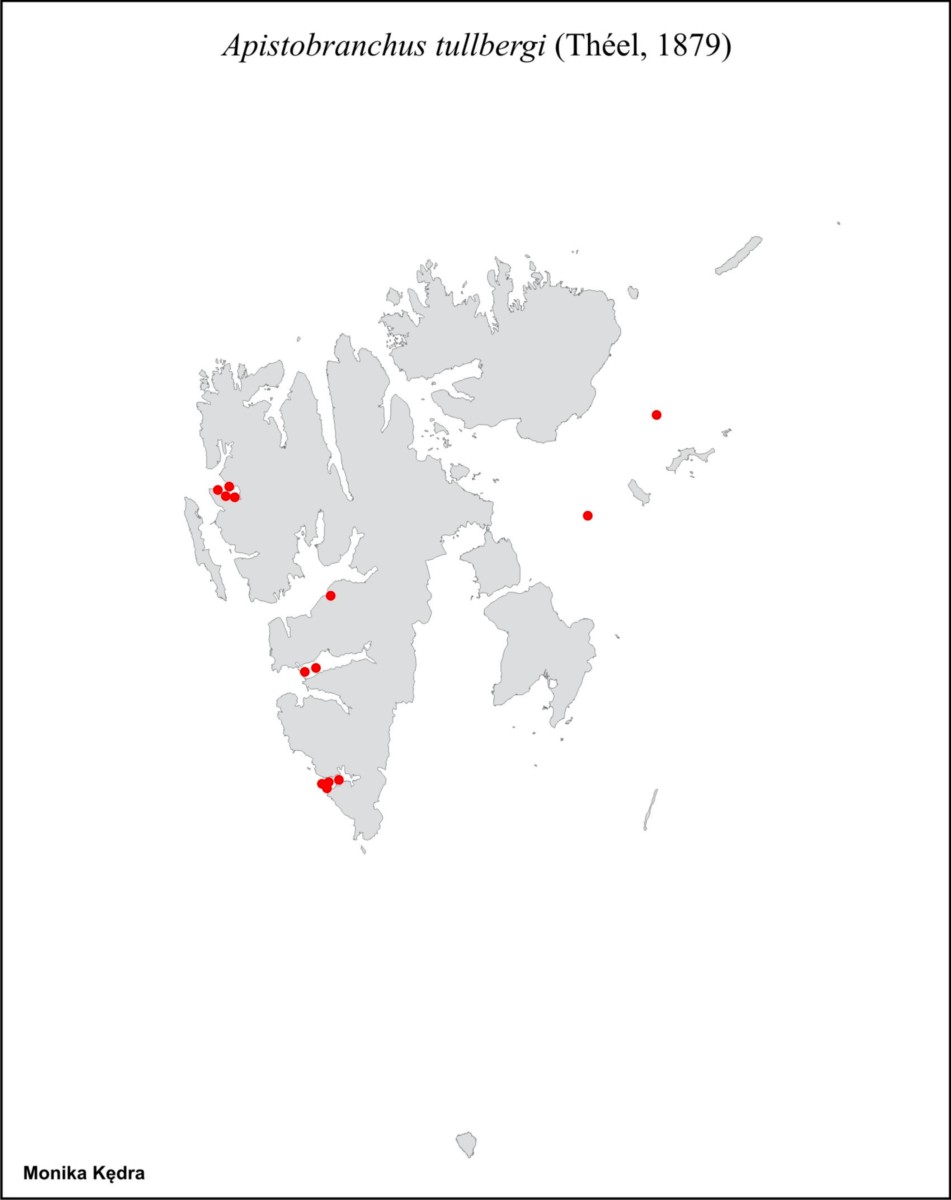Apistobranchus tullbergi (Théel, 1879)

|

|

|
Aricia tullbergi Théel, 1879
Apistobranchus tullbergi Eliason, 1916
Skardaria fragmentata Wesenberg-Lund,1951
Skardaria fragmentata McIntyre, 1961
Distinguishing characteristics
Prostomium rounded, with two dorsolateral nuchal organs and two tentacles.
Chaetiger 7 with a big lobe with 6-14 big and conical papillae.
Yellowish-brown, densely crowded chaetae on chaetiger 1-7.
Species description
Body long, cylindrical, anteriorly slightly flattened. Prostomium rounded, with two dorsolateral nuchal organs and two tentacles, without eyes. Chaetiger 1 to 7 with cirriform or lanceolate interramal cirrus. Neuropodia of anterior 2 or 3 segments with a triangular subpodial papilla, on chaetiger 4 with a subpodial lobe with 4-6 big papillae, on chaetiger 5 and 6 big, triangular lobes with many small papillae, chaetiger 7 with a big lobe with 6-14 big and conical papillae and chaetigers 8-11 each with a big, finely papillated lobe. Posterior neuropodia conical with several aciculae. The first 7 (especially 5) chaetigers with very conspicuous, large, tufts of numerous yellowish-brown, densely crowded chaetae. Pygidium with 2 long and 1 short cirri.
Size
Color
Whitish to yellowish.
Habitat
Coarse sand, mud and muddy sand, also on seaweeds and Zostera. Upper sublittoral to 360 m.
Mobility
Discretely motile.
Feeding
Surface deposit feeder.
Facultative suspension feeder.
Life cycle
Distribution
Arctic, North Pacific, North Atlantic to Mediterranean, northern North Sea to Öresund.

